I first heard of bismuth while sitting in a duck blind in the mid-90s. My friend next to me was passing the time by reading a copy of Ducks Unlimited magazine when he asked me, out of the blue, “What do you think of bismuth?”
I had no idea what he was talking about and actually accused him of making the word up. You can get into some weird arguments during a boring day in the blind.
It turns out my friend wasn’t making up words, but had been reading an article about a new shot type. Bismuth was one of the first commercially viable non-toxic alternatives to steel shot. Long before its use as a shot material, bismuth (specifically bismuth subsalicylate) was the primary ingredient in antacids, like Pepto Bismol.
Besides being non-toxic, bismuth is also denser than steel and almost as dense as lead. Bismuth has a density of around 9.6 grams per cubic centimeter, compared to lead’s approximate density of 11 g/cc and steel’s density of 7.8 g/cc. Since bismuth falls about midway between steel and lead, it’s easy to see why it’s such an attractive alternative.
Best of all, bismuth is softer than steel and safe for use in all chokes and older shotguns that could be damaged by hard steel shot. Bismuth has returned many vintage scatterguns to the marsh.
Unfortunately, bismuth has one notable drawback – it’s very brittle and subject to fragmentation. This problem is compounded when hurled at high velocity towards a bird. Early bismuth shot was notorious for fragmenting upon impact, which limited penetration. Fortunately, several ammo companies have developed unique ways to deal with the fragmentation issue, which we will examine individually in a moment.

Vintage shotgun owners may appreciate bismuth’s gentler qualities, but its recent resurgence in popularity has been driven mainly by cost. Although still more costly than lead or steel, bismuth is less costly than tungsten, which is why several ammo companies have recently shifted their focus to developing bismuth-based products.
However, neither bismuth nor steel or even lead will ever be as dense as tungsten-based shot, which ranges from 12 g/cc up to an incredible 18 g/cc. That latter number is boasted by Tungsten Super Shot (TSS) which is currently enjoying a cult-like following among some turkey hunters and diehard waterfowlers. Despite its lethal effectiveness downrange, tungsten is a very expensive and rare earth metal, making it cost-prohibitive for many hunters to use in any sort of volume.
Bismuth bridges the gap. It offers improved performance over steel, almost matches lead, and is more affordable to load than tungsten. This benefit has not been lost on ammunition manufacturers, at least seven of which now offer bismuth loads of some sort for waterfowl, upland, and turkey hunting. Let’s take a look at each of them.
Kent
Kent Cartridge offers one of the most extensive bismuth lineups with loads designed for hunting waterfowl, upland birds, and turkeys.
Bismuth Waterfowl is available in 3 ½” 12-gauge with 1 ½-oz. of number 3 or 4 shot at 1,450 fps, 3” 12-gauge with 1 3/8-oz. of 3s, 4s, or 5s at 1,450 fps, 2 ¾” 12-gauge with 1 ¼-oz. of 4s at 1,350 fps, and 3” 20-gauge with 1-oz. of 3s, 4s, or 5s at 1,400 fps.
Kent’s Bismuth Upland is offered in four gauges – 12, 16, 20, and 28. 12-gauge loads include 3” with 1 ½-oz. of 5s at 1,350 fps and 2 ¾” with either 1 ¼-oz. or 1 1/8-oz. of 5s or 6s at 1,350 and 1,325 fps, respectively. The 2 ¾” 16-gauge load has 1-oz. of 6s at 1,300 fps, 2 ¾” 20-gauge has 1-oz. of 5s or 6s at 1,200 fps, and 2 ¾” 28-gauge has 7/8-oz. of 6s at 1,200 fps.
Bismuth Turkey comes in 3” 12- and 20-gauge with 1 5/8-oz. and 1 1/8-oz. payloads respectively of number 5s at 1,300 fps. Turkey comes in 5 round boxes, while Upland and Waterfowl come in 25 round boxes.
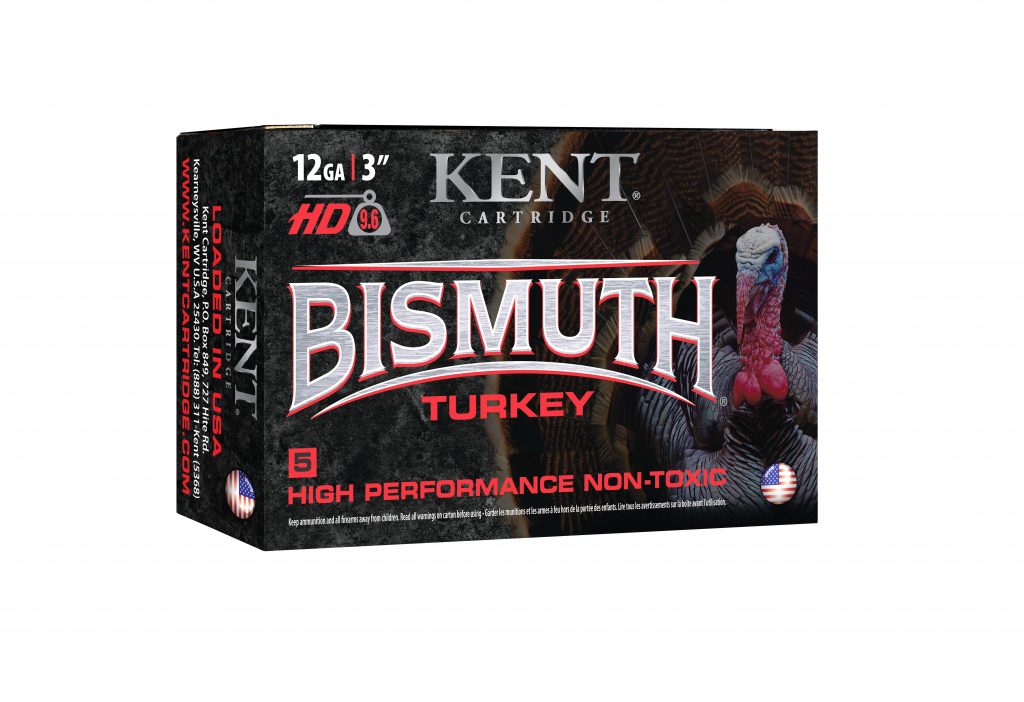
Winchester
Winchester has one bismuth offering – Xtended Range Bismuth. This 3” 12-gauge load has 1 5/8-oz. of number 5s and a modest velocity of 1,200 fps. It comes in 10 round packages and is marketed as both a waterfowl and turkey load. Most bismuth loads, especially in the smaller shot sizes, could also be used to hunt turkeys in non-toxic zones.
What really separates Xtended Range Bismuth from the rest of the pack is that it uses Winchester’s proprietary Shot-Lok technology to protect the bismuth shot from fracturing. First introduced in Winchester’s Long Beard XR lead turkey loads, Shot-Lok is a hard resin that encapsulates the shot. Upon firing the shell, the resin breaks up and acts like a buffering agent to protect the lead pellets from deformation. With bismuth, there’s the added benefit of protecting the brittle shot from fragmenting. It’s an ingenious solution to a problem that has plagued bismuth since its inception.
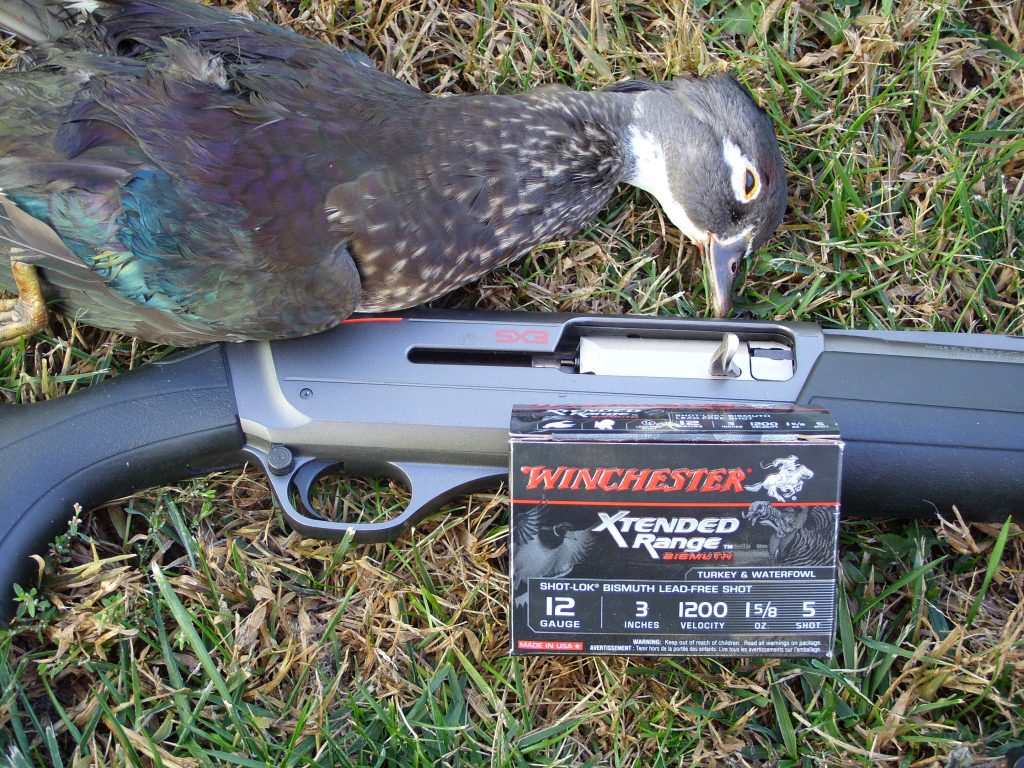
Federal
Federal Premium Bismuth is part of the company’s MeatEater ammo line. Federal’s proprietary Flitecontrol Flex wad protects the shot as it exits the barrel.
MeatEater Bismuth comes in 25 round boxes and is offered in 3” 12-gauge 1 3/8-oz. at 1,450 fps, 2 ¾” 12-gauge 1 ¼-oz. at 1,350 fps, and new 3” 20-gauge 1 1/8-oz. at 1,350 fps, all available with either number 3, 4, or 5 shot. The packaging states these loads are intended for both waterfowl and upland hunting. Indeed, they would work just fine for both ducks and pheasants, as would many bismuth loads.

Rio
Rio was one of the first ammo companies to jump back on the bismuth bandwagon and helped kick-start its resurgence in popularity. Not surprisingly, Rio has an extensive lineup of bismuth loads in gauges 12 through .410.
12-gauge offerings include two 2 ¾” loads with either 1-oz. or 1 ¼-oz. of 4s or 6s, both at 1,350 fps, and two 3-inch loads with either 1 ¼-oz. of 4s or 5s at 1,400 fps or 1 5/8-oz. of 3s, 4s, or 5s at 1,350 fps.
There’s also a 2 ¾” 16-gauge load with 1-oz. of 4s or 6s at 1,200 fps, a 2 ¾” 20-gauge loads with 1-oz. of 4s, 5s, or 6s at 1,250 fps, a 2 ¾” 28-gauge load with 7/8-oz. of 7s at 1,250 fps, and a 3” .410-bore load with 9/16-oz. of 4s or 6s at 1,175 fps. 12- and 20-gauge loads are sold 10 rounds per box, 16, 28, and .410 have 25 rounds.
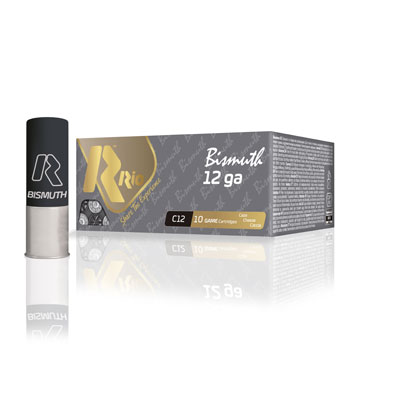
Hevi-Shot
Best known for it tungsten shot products, Hevi-Shot recently started making and loading its own bismuth pellets simply because it’s more affordable to make and load than tungsten. Hevi-Shot still offers its various tungsten-based loads, but the focus, at least for now, has switched to bismuth.
Hevi-Shot’s all-bismuth loads are called Hevi-Bismuth Waterfowl and Hevi-Bismuth Upland. It should be noted that the “Hevi” in Hevi-Bismuth is merely branding. Hevi-Bismuth isn’t any denser than other bismuth products.
Incredibly, Hevi-Bismuth Waterfowl is offered in all six shotgun gauges, 10 through .410. These include 3 ½” 10-gauge 1 ¾-oz. 1s, 2s, or 4s at 1,350 fps, 3 ½” 12-gauge 1 ½-oz. 1s, 2s, or 4s at 1,500 fps, 3” 12-gauge 1 3/8-oz. 1s, 2s, or 4s at 1,450 fps, and 2 ¾” 12-gauge 1 ¼-oz. 2s, 4s, or 6s at 1,450 fps.
The line also includes 2 ¾” 16-gauge 1 1/8-oz. 2s, 4s, or 6s at 1,350 fps, 3” 20-gauge 1 1/8-oz. 2s, 4s, or 6s at 1,400 fps, 2 ¾” 28-gauge 7/8-oz. 4s or 6s at 1,350 fps, and 3” .410-bore 9/16-oz. 4s or 6s at 1,300 fps.
Hevi-Bismuth Upland is only available in 2 ¾” 12-gauge with 1 ¼-oz. of 5s at 1,400 fps and 2 3/4” 20-gauge with 1-oz. of 5s at 1,300 fps.
Hevi-Metal Longer Range features bismuth pellets layered over steel pellets, replacing the tungsten component of the original Hevi-Metal with bismuth to maintain affordability. 12-gauge options include 3 ½” 1 ½-oz. BBBs, BBs, 2s, 3s, or 4s, 3” 1 ¼-oz. BBBs, BBs, 2s, 3s, 4s, or 6s, and 2 ¾” 1 1/8-oz. 2s, 4s, or 6s, all at 1,500 fps. The Hevi-Metal LR line-up also includes 3 ½” 10-gauge 1 ¾-oz. BBBs, BBs, 2s, or 4s and 3” 20-gauge 1-oz. 2s, 3s, or 4s, both at 1,350 fps.
Hevi-Hammer is another bismuth-over-steel product. Hevi-Hammer originally came in either 3” 12-gauge 1 ¼-oz. 2s, 3s, or 4s at 1,500 fps or 3” 20-gauge 1-oz. 2s or 4s at 1,350 fps, but the line has expanded this year to include 3” 12- and 20-gauge Pheasant, Upland, and Dove variants. 12-gauge Pheasant has 1 3/8-oz. of 3s, Upland 1 1/8-oz. of 5s, and Dove 1-oz. of 7s, all at 1,350 fps, while 20-gauge Pheasant has 1-oz. of 3s, Upland 7/8-oz. of 5s, and Dove ¾-oz. of 7s, all at 1,325 fps.
That’s a bunch of bismuth options, all of which come in 25 round boxes.
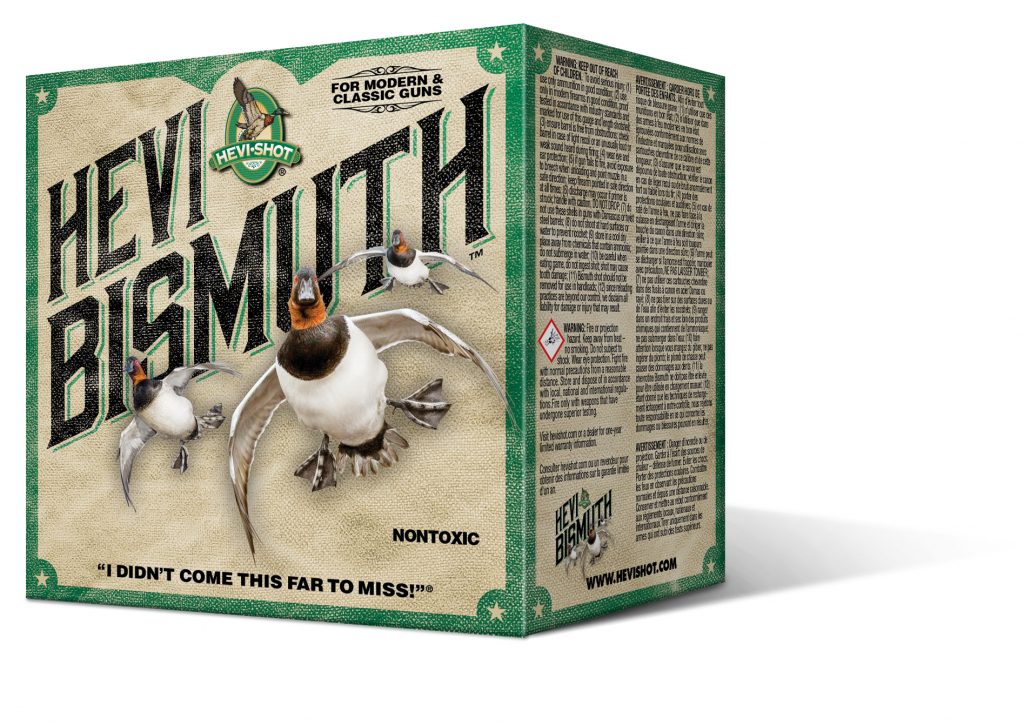
Browning
Browning entered the bismuth arena this year with the introduction of Wicked Blend. Like some of Hevi-Shot’s products, it features both steel and bismuth pellets, but with a twist. Wicked Blend consists of 30% bismuth shot (by weight) stacked over steel shot. However, the bismuth component comes in smaller shot sizes than the steel to create a true duplex load. The smaller shot helps fill-in patterns.
Initial Wicked Blend offerings include 3 ½” and 3” 12-gauge with 1 ½-oz. and 1 ¼-oz. payloads respectively of either number 1 bismuth over BB steel or number 4 bismuth over number 2 steel, both at 1,450 fps, as well a 3” 20-gauge load with 1-oz. of bismuth 4s and steel 2s at 1,300 fps.
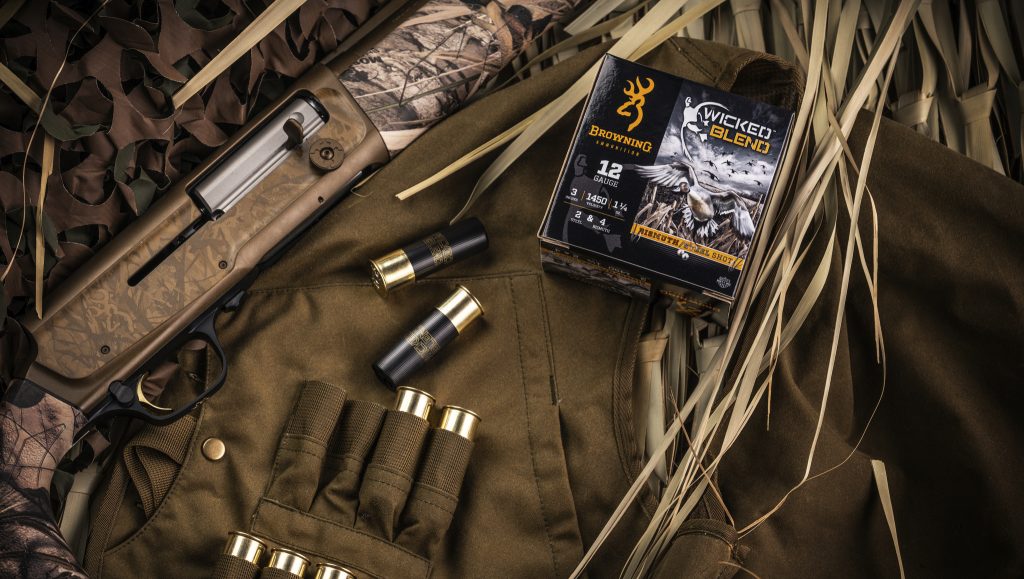
Boss
As a newcomer to the ammo industry, Boss has a fresh perspective on loading and marketing non-toxic shotshells. The company has also developed a simple and effective way of dealing with bismuth’s fragmenting issue – copper plating.
It makes perfect sense that plating lead prevents pellet deformation and improves patterns. The same thing happens when bismuth is plated. It’s a wonder that no one thought of it sooner, but Boss did and has a patent pending for its high-density metal plating process.
Loads are available in all gauges 10 through .410. The 3 ½” 10-gauge offering has a massive payload of 2 1/16-oz. of 1s, 2s, or 4s. 12-gauge loads include 3” with 1 ½-oz of 2s, 3s, or duplex 3s and 5s, 3” with 1 3/8-oz. of 4s or 5s, and 2 ¾” with 1 ¼-oz. of 4s, 5s, or 3s/5s.
2 ¾” 16-gauge has 1-oz. of 3s, 5s, or 7s. 20-gauge loads include 3” with 1 1/8-oz. of 4s, 3s, 5s, 3s/5s, or 7s, and 2 ¾” with 7/8-oz. of 5s or 7s. 2 ¾” 28-gauge has 1-oz. of 4s, 5s or 7s, and 3” .410-bore has 9/16-oz. of 5s or 7s.
Velocity for all 12, 16, 20, and 28-gauge loads is 1,350 fps, 10-gauge is 1,300 fps, and .410-bore is 1,325 fps. Each comes with 20 rounds (not 25) per box or money bag. That latter unique packaging demonstrates that Boss literally thinks outside the box.
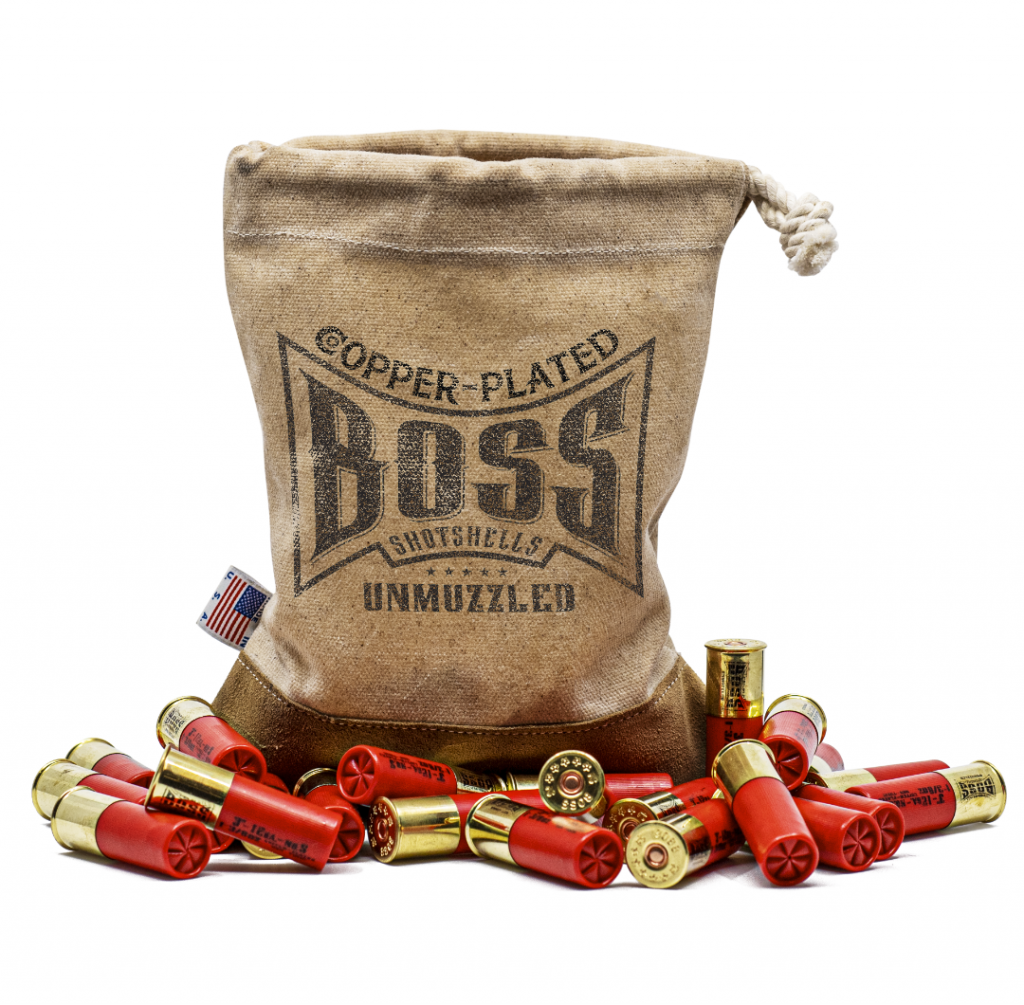
Availability
I asked several manufacturers about the current availability of their products, including bismuth, given the current ammo hoarding trend. Their responses were basically the same, but Hunter Colbert of Kent Cartridge summed it up best, “Availability on all of our ammo is pretty light as of right now. Hopefully, everything will level out over the next month or so.”
Indeed, website availability of many of these loads is still listed as out of stock. Manufacturers and consumers alike are hopeful the situation improves by fall when hunters will need bismuth and other hunting loads most.




